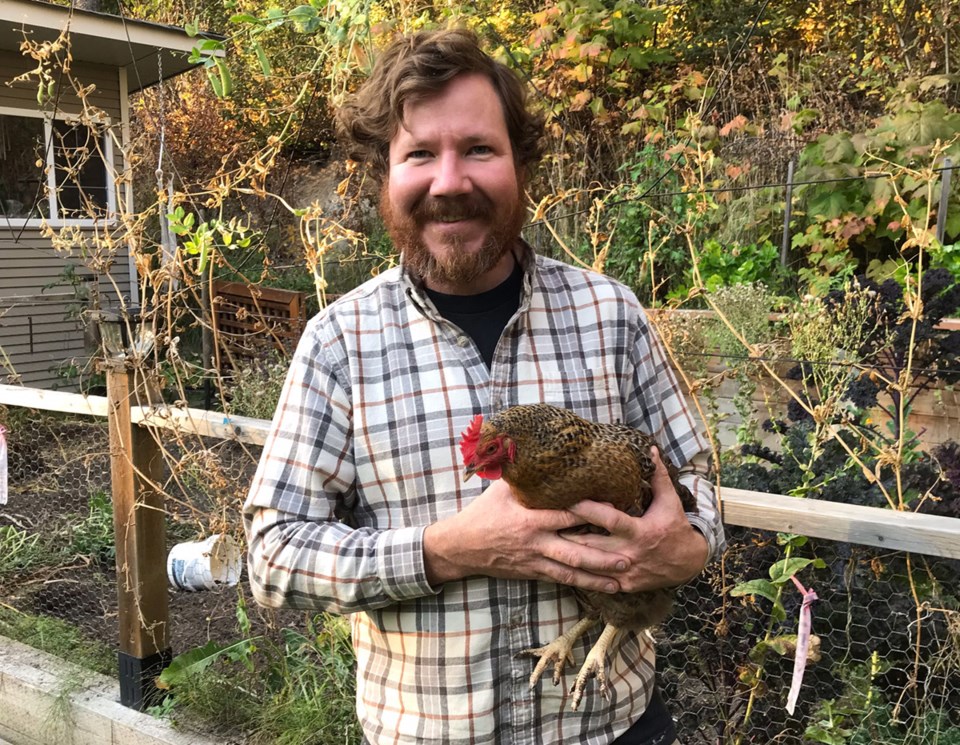It might be time for the chickens to fly the coop.
And by coop I mean the coop of red tape that prevents us from owning chickens in town.
A few years ago I ruffled a lot of feathers with the controversial idea of having a few backyard hens to clean up kitchen scraps and kick out a few eggs.
For months afterwards I had people crowing across streets and parking lots: “Hey, it’s the backyard chicken guy!”
Not all of it was in jest.
A lot of people aren’t too far removed from that old era of self-sufficiency where it wasn’t a mark of shame to have dirt under your fingernails, a connection to nature, and independence from the monopolies.
About 10 years ago the group Poultry for PG got the idea on the agenda at city council. But it got shot down.
“I don't see a real hardship when it comes to access to eggs," stated former councillor Terri McConnachie.
A lot has changed in a few years.
The year after McConnachie scratched her line in the sand, the wildfires started to threaten the supply lines. Then in 2020 Covid shut them down. This happened again in 2021 when the roads got washed out and yet again briefly at the end of 2022 following a Lower Mainland snowstorm.
Now, we have avian flu sweeping across North America and while Canadian egg prices haven’t yet hit the stratosphere like the American eggs have, the supply lines are intertwined. Almost all of the eggs for the chickens themselves originate in the United States, produced in hatcheries controlled by just two giant corporations, EW Group and Hendrix Genetics. These two European companies control 90 per cent of egg-laying chicken genetics worldwide as well as turkey genetics and a good chunk of the broiler chicken breeding.
Luckily Canada’s egg supply management system, which I support, means Canada has a larger number of independent farms than in the US. This helps reduce the risk of major culls.
But it hasn’t ensured Canadian independence from the risk-prone clutches of this global chicken egg cartel. American antitrust lawyer Basel Musharbash lays a compelling case that this cartel is limiting the egg supply needed to rebuild flocks in what is likely a classic monopoly move so as to increase their profits.
Nor has it ensured that our egg farms stayed in Prince George.
If you look at the map of northern BC’s egg production, we have one producer in Terrace and one in the Peace. The only licensed egg we produce in the Central Interior is a giant goose egg. Luckily this may change. There are reports we will soon have an egg farm in Quesnel.
But backyard chickens will still help with our food security, and chatting with Raija Easterbrook of North of 50 Laying Hens, there’s lots of backyard breeders who are happy to step up to the plate and provide some local alternatives in the provision of local chicken layer stock.
As it stands, properties zoned Rural Residential can have up to 25 chickens if the lot is 0.2 hectares, and as many as 100 chickens if your lot is 1 hectare with no limit on the number of feathered friends if you have four hectares or more. (During the election campaign I made the mistake of thinking this was overruled by another bylaw stating there is no animal breeding or boarding on lots smaller than 4 hectares, but that apparently didn’t apply to poultry.)
Nevertheless if you are in any kind of residential zoning, like in the bowl, you can’t have chickens.
Given the peckarious egg supply situation in Northern BC, and the global hardships and risks facing our increasingly monopolized supply lines, it would be wise not to put all our eggs in one basket. We wouldn’t even have to wing it. We could simply adopt the bylaw Williams Lake recently adopted.
The next time something happens, let’s make sure we have eggs in the fridge, not on our faces.



